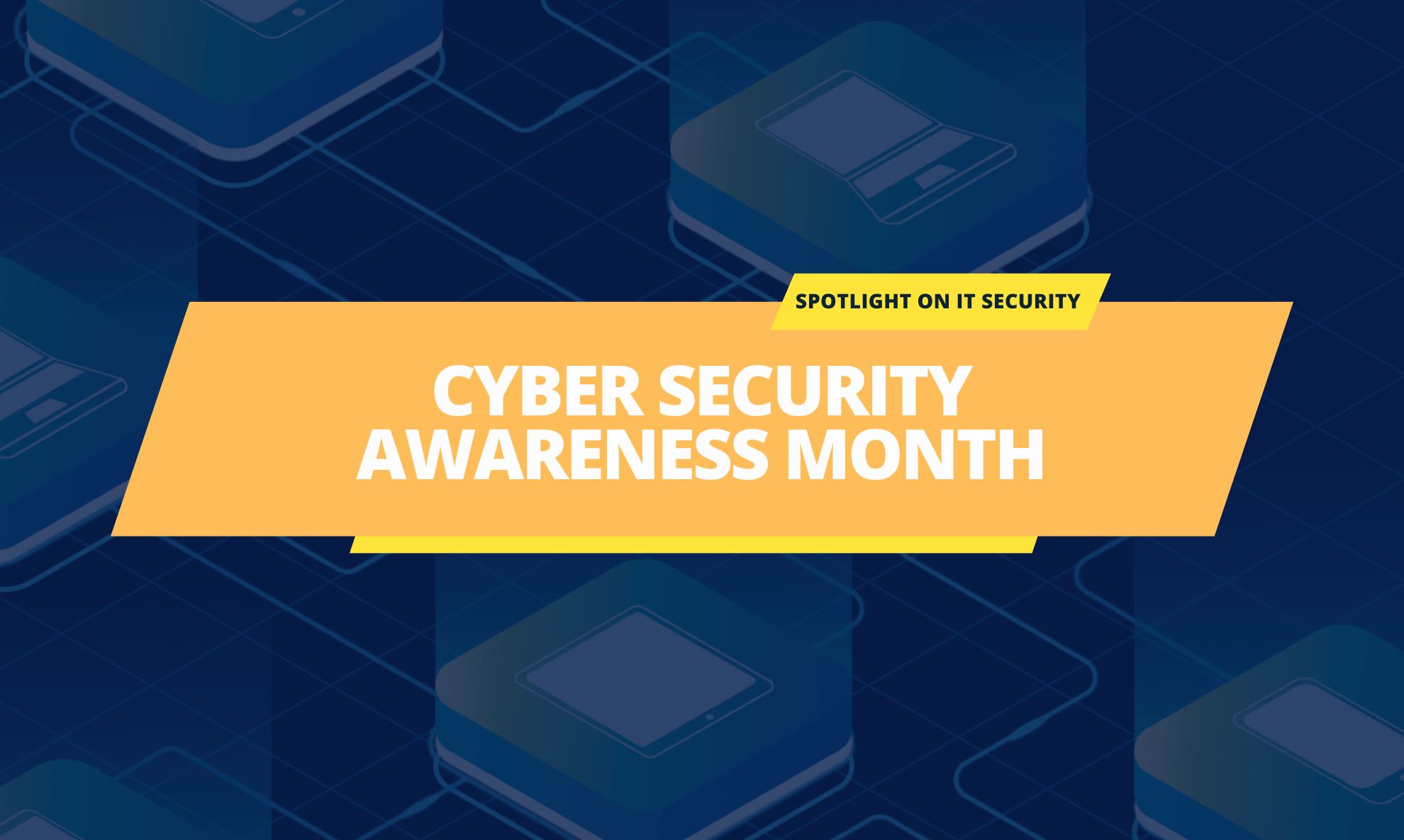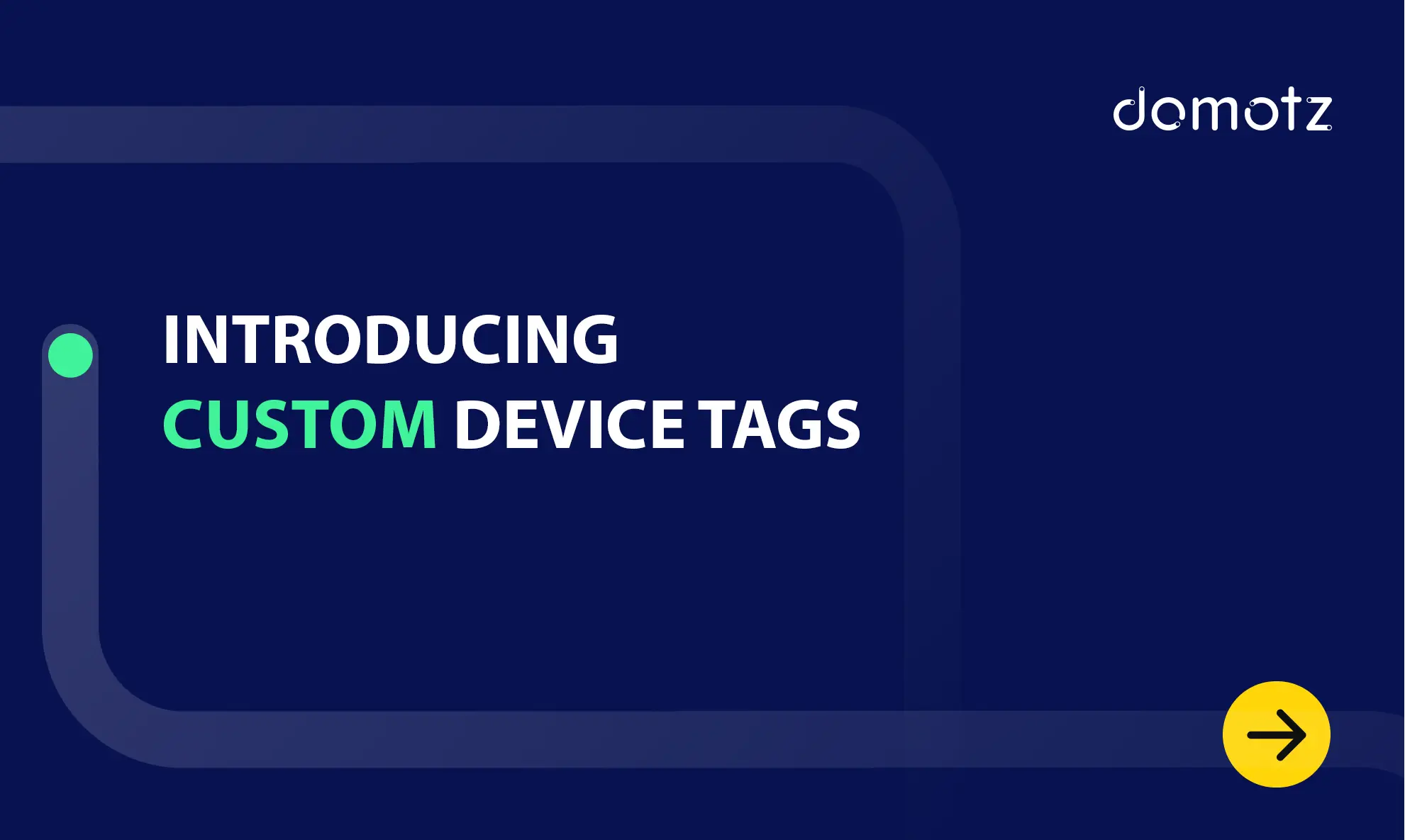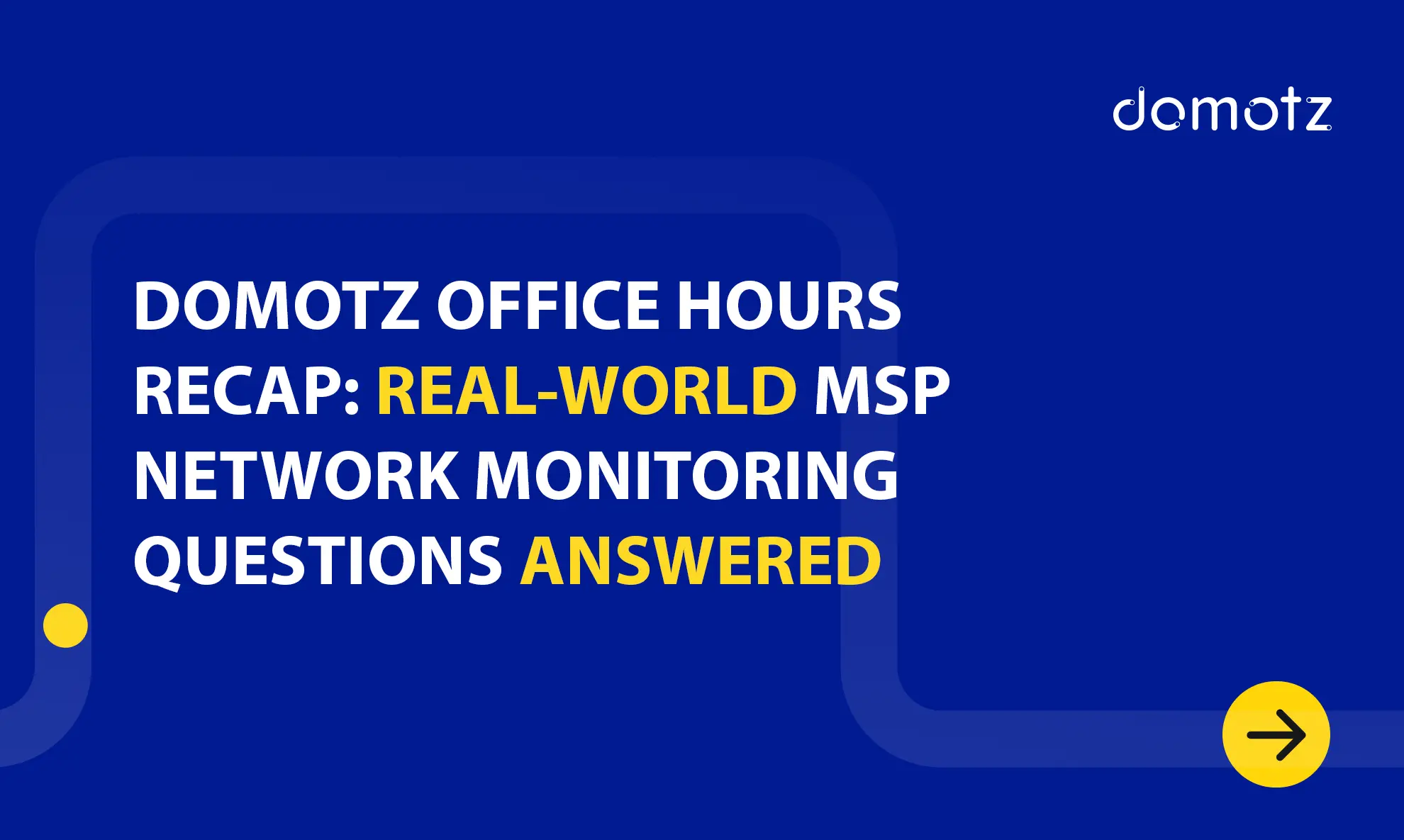History and Origins of Cybersecurity Awareness Month
For most Americans, October means Halloween – but that’s not the only terrifying thing you should be thinking about around this time of year. Cybersecurity threats are just as scary, and there’s no better way to stay safe than by promoting good habits. Fortunately, October is also Cybersecurity Awareness Month, so you’ll find plenty of inspiration in this article.
If you’ve never heard of Cybersecurity Awareness Month (CSAM) – or need a refresher – we’ve got you covered. Here’s a quick guide to the annual event, insights on what 2022’s theme means for MSPs, and ideas on how to participate.
Check out the unique content we’ve produced about using Domotz network monitoring software to satisfy specific CIS controls.
The Origins of Cybersecurity Awareness Month
The origins of Cybersecurity Awareness Month go back to the National Cybersecurity Awareness Month (NCSAM) campaign. In October 2004, the U.S. Department of Homeland Security (DHS) and the National Cybersecurity Alliance (NCA) launched NCSAM to promote awareness about the importance of cybersecurity and provide resources and tips to help people stay safe online.
In the early 2000s, computers and internet technology were gaining a broader foothold than they had ever enjoyed, but they were still pretty new. It was natural that people didn’t know much about cybersecurity, which posed a significant problem: Connected technology was spreading fast, and so were the dangers.
Things have evolved quite a lot since then, but one thing remains the same: Most people, including those in the professional sphere, lack cybersecurity knowledge.
Fortunately, Cybersecurity Awareness Month has evolved to keep up. Today, it consists of a yearly observance typically led by the United States Congress and the President of the United States.
Since first declaring the event, officials have followed up annually with various initiatives and declarations. These directives work to educate not only government employees and the private business sector but also consumers, non-governmental organizations, and ordinary individuals.
The goal of CSAM is to raise awareness about cybersecurity risks and provide resources to help protect against these hazards. Each year, CSAM occurs from October 1-31, and each observance has its campaign theme geared toward tackling the most relevant current threats.
Cybersecurity Awareness Month 2022
CSAM’s straightforward, user-friendly approach offers a helpful introduction to adopting a healthier cybersecurity mindset if you run a company that depends on the tech. While developing a custom plan for strengthening your security stance is essential, there’s nothing wrong with building on CSAM’s themed structure as a foundation.
The theme for CSAM 2022 is “See Yourself in Cyber.” As usual, this year’s campaign breaks the pieces down into four actionable steps that everyone ought to follow – and it helps that these changes don’t take a lot of work to implement effectively:
Think Before You Click
Clicking on links is a natural part of being online that we often don’t consider. The idea behind this theme is to change the standard by getting people to step back and evaluate what they want to click on before doing so – and go further than just ignoring dangerous-looking digital content. For instance, if you see a link that looks unfamiliar or suspicious in your work email, avoiding it is just the first step: You should also report it to protect others.
Update Your Software
One common way hackers gain access to sensitive data is by looking for software vulnerabilities and backdoors, and it’s not always easy to know whether your tools are safe. Most applications and systems use other software in libraries, APIs, or web services, which can introduce numerous hidden risks. Keeping your software updated is the easiest way to sidestep these issues as bad actors develop new techniques.
Use Strong Passwords
The best passwords are long and unique – so ditch those short phrases you can easily remember or habitually use on other sites. Experts recommend using password managers that create and store random credentials for different accounts and encrypt the information so that only authorized stakeholders can access it. Password managers are helpful in professional settings where you might have to use many other apps daily but can’t afford to leave gaps in your security defenses.
Use Multi-factor Authentication (MFA)
MFA is a security measure that requires users to present more than one form of identification when logging into a system. MFA identification can include a password, security token, personal device, or fingerprint. There are a variety of MFA methods that organizations can choose from, like two-factor authentication (2FA). 2FA requires two forms of identification: biometric authentication, which uses physical characteristics (such as fingerprints or iris scans) to verify identity.
Recommendations for MSPs to participate in Cybersecurity Awareness Month 2022 and beyond
As an MSP, you can also help your clients by raising awareness about cybersecurity risks and providing them with resources to help protect their businesses. Learn more about implementing a network security architecture at your organization.
Some brilliant ideas for MSPs include:
Educate your clients about cybersecurity risks and how they can protect themselves
Just like training your staff, keeping your clients updated on security best practices and threat avoidance makes it easier to sidestep problems. Although you may not be liable for your customers’ mistakes, their actions on your systems and infrastructures can raise your overall risk, so it’s worth closing this security gap.
Educating your clients is also an intelligent PR move. It establishes you as a knowledge authority willing to try to protect others genuinely – could there be a better differentiator?
Make sure your clients’ systems are up-to-date with the latest security patches.
Patching client systems to keep them updated is a must. It’s a relatively easy way to eliminate many vulnerabilities in one fell swoop and safeguard your infrastructure against inevitable human errors. It also takes some responsibility off your customers’ shoulders to make your offerings more attractive.
Implement security measures such as two-factor authentication and intrusion detection/prevention systems
Help your clients avoid identity-based cybersecurity threats by instituting MFA systems and providing breach alerts – particularly on services like your web dashboards. These high-contact points are apparent targets for bad actors, making it easier for admins to access them securely.
Have an Awesome CSAM
Participating in CSAM and taking steps to protect against cybersecurity risks is important. We can all do our part to make the internet safer for everyone. If you’re an MSP or other IT organization, you have the power to make an even more significant change. You will be setting standards others will follow. Remember: CSAM is just one month. However, getting into the swing of things now can help you uphold effective cybersecurity practices all year.
How to Participate in CSAM 2022
There are many ways to participate in CSAM. Some ideas include:
Get Better Informed
Educating yourself and others about cybersecurity risks is the first step in putting CSAM’s ideas to good use. Correcting your mistakes is impossible if you aren’t aware of what you’re doing wrong.
There are many ways to educate your team about cybersecurity, like conducting ongoing organization-wide training. For instance, many enterprises make security education a fundamental part of their new employee onboarding. This sets the tone early and fosters more security-aware corporate cultures. Others invest in individual employee training. For example, they pay for their IT staff and leadership to obtain industry-accepted certifications. These could be certifications like CompTIA Cybersecurity Analyst (CySA+), GIAC Security Essentials (GSEC), or (ISC)² Systems Security Certified Practitioner (SSCP).
Why is cybersecurity training so helpful? Professional education can make it simpler to leverage CSAM’s tips. For example, like implementing MFA systems and determining which software needs to be updated regularly to keep the organization safe. It also helps you recognize threats faster.
Share Approved Resources
Spreading resources and pointers in your organization can help you catch edge cases you might not have known. For instance, the National Cybersecurity Alliance shares a report on public security behaviors and attitudes each year. This can help leaders get a better feel for the current landscape.
It can be tough to know where your weaknesses lie. Disseminating information on a healthy security stance empowers your team to self-evaluate more honestly and make appropriate changes.
Report Any Suspicious Activity to the Authorities or a Security Professional
It’s not always obvious what a security gap looks like – let alone whether you’ve suffered a breach! Bringing outside assistance when you discover something fishy is important. Furthermore, it is a reliable way to learn how to respond effectively and limit potential damage.
Seeking help isn’t a sign of weakness or incompetence. It’s a smart strategy for limiting fallout after a security event.
Update All Your Passwords
This suggestion is a super simple one. Stress-test your proactive mitigation capabilities by advancing the password expiration deadline for your organization.
You can get people used to the idea by forcing everyone to change their passwords. You’ll also discover what hurdles you’ll need to overcome to make password updates a regular habit. This is something worth knowing before facing an actual breach event.
Further Reading:



